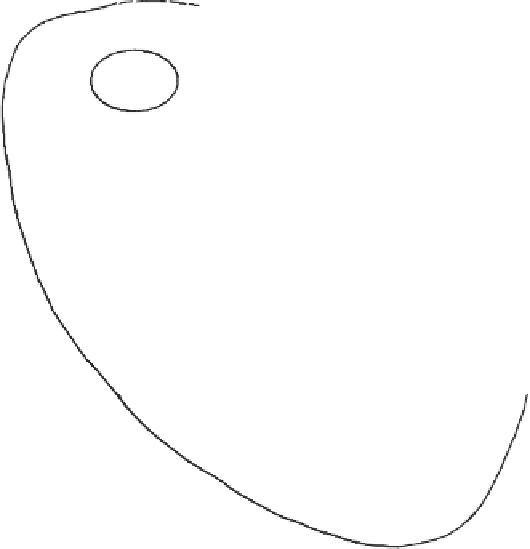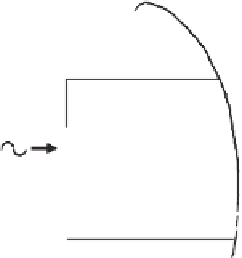Biomedical Engineering Reference
In-Depth Information
Left ventricle
Impedance
catheter
<10
µΑ
Z
(t)
1
Z
(t)
2
(t)
Z
3
(t)
Z
4
Pressure sensor
Figure 8.21
Ventricular volume can be measured using the conductance catheter. A small (
10 µA), high-frequency (e.g., 50 kHz) constant
current is injected via the two extreme electrodes of a multielectrode catheter. Voltages are measured at several intermediate pairs of electrodes
to electrically divide the ventricular cavity into a number of cylindrical segments. The various voltage signals are each proportional to the vol-
ume held by each segment. The sum yields the total ventricular volume. Pressure is measured using a miniature sensor that is part of the con-
ductance catheter, since these measurements are used most often to determine the left-ventricular pressure-volume relationship.
resulting across
C
p
represents the e
ect of integrating charge transferred from sources in
the body (e.g., the intracardiac electrogram signal) or lead system (e.g., electrode polar-
ization potentials) on a capacitor of value
C
a
ff
C
p
.
Immediately thereafter,
C
a
is discharged across the lead system by closing a switch for
the same amount of time
t
CCD
that sampling was done on
C
p
. With no other sources in the
circuit, the voltage on the active capacitor decays exponentially according to
V
C
a
V
src
e
t
/
RC
a
where
V
C
a
is the voltage remaining on the active capacitor after a time
t, V
src
the initial volt-
age of the active capacitor,
R
the lumped resistance of the circuit, and
C
a
the capacitance
of the active capacitor. The resistance of the circuit to the narrow pulse would then be
determined from
C
a
ln[
V
C
a
t
(
t
)/
V
src
]
R



























































Search WWH ::

Custom Search